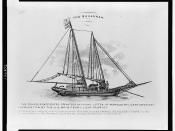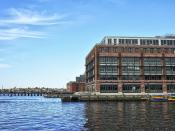good fun -
The word 'privateer' conjures a romantic image in the minds of most Americans. Tales of battle and bounty pervade the folklore of privateering, which has become a cherished, if often overlooked part of our shared heritage. Legends were forged during the battle for American independence, and these men were understandably glorified as part of the formation of our national identity. The fact of the matter is that the vast majority of these men were common opportunists, if noteworthy naval warriors. The profit motive was the driving force behind almost all of their expeditions, and a successful privateer could easily become quite wealthy. In times of peace, these men would be common pirates, pariahs of the maritime community. Commissioned in times of war, they were respected entrepreneurs, serving their purses and their country, if only incidentally the latter. However vulgar their motivation, the system of privateering arose because it provided a valuable service to the country, and indeed the American Revolution might not have been won without their involvement.
Many scholars agree that all war begins for economic reasons, and the privateers of the war for independence contributed by attacking the commercial livelihood of Great Britain's merchants.
It is ironic that the entire notion of privateering began in Great Britain. In 1649 a frigate named Constant-Warwick was constructed in England for a privateer in the employ of the Earl of Warwick. Seeing how profitable this investment was, a great many of the English peerage commissioned their own privateers. The Seven-Years War saw the proliferation of privateering on both the English and French coasts as each attempted to disrupt their opponent's colonial trade. American investors quickly entered this battle, commissioning ships to prey upon cargo vessels coming to and from French colonial holdings in the Americas. Here began...


